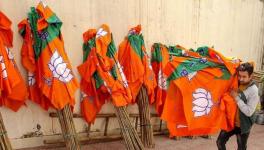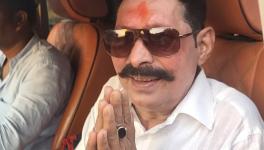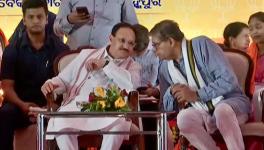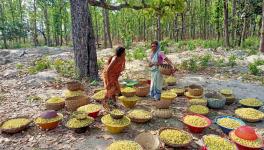Milk Producers Agitated By The Low Price Of Milk in Himachal Pradesh
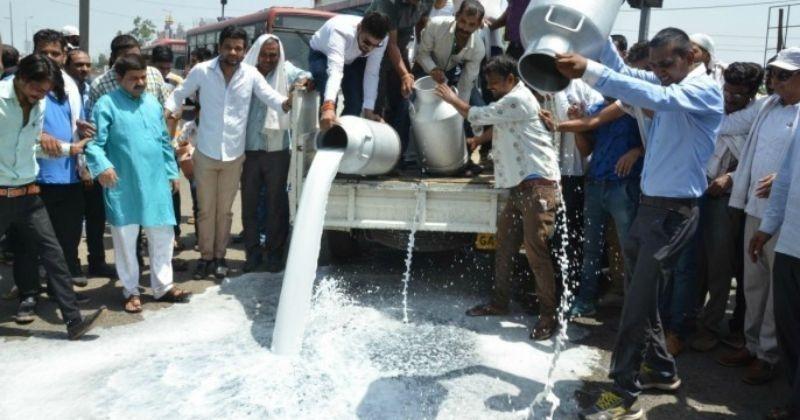
Image Used For Representation Purpose Only
Milk producers of Katra, Anni, Nirmand, Karsog and parts of Jhanjeri block in Mandi have decided to express their anguish over the BJP led state and central government’s anti-farmer policies by lending their support to the All India Kisan Sabha’s call for “BJP Quit India” on the 9th of August which marks the upcoming anniversary of Gandhi’s historic Quit India Movement.
Poor crop productivity, low availability of per capita arable land, substantial availability of common property grazing lands, and lack of other income-generating activities have made the rearing of dairy animals an economic compulsion in the western Himalayan region, especially in Himachal Pradesh, India.
Dr. Onkar Shad, Secretary, Himachal Kisan Sabha speaking with Newsclick, explained that the milk producers of the aforementioned areas supply their milk to Himachal Pradesh Milk Federation (HP MilkFed). Approximately 55,000-60,000 litres of milk is collected daily at the Duttnagar milk plant in Tehsil- Rampur Bushahr, District Shimla, among other private milk plants which collect milk from the farmers and sell in the market. The rate which is given to the farmers for the milk can range from 9 rupees to 20 rupees but the average rate remains 15-18 rupees per litre, making it cheaper than bottled water which is retailed at a minimum price of 20 rupees whereas the cost of production of a liter of milk varies between 18-30 rupees. Since the farmers are unable to parallel even their selling price with their cost of production, let alone gain profit, they are incurring heavy losses, forcing them to sell their cattle as reported by a farmer of Tutu village in Nankhari block during the Kisan Sabha’s meeting with the local farmers.
Explaining further he said, “A pack of Godrej feed costs approximately 970-985 rupees, one stack of hay costs approximately 30 rupees and a local bred cow requires at least three stacks of hay per day which means that the rate that the farmers are getting have been low consistently and their expenditure has been rising. Owing to these reasons, there is a general sentiment of fury among the farmers towards the government and they believe there should be an increase in the prices of milk that they sell.”
MilkFed has set the minimum rate of milk as 16-17 rupees per liter. This is the total for milk which contains 3.7 per cent fat and 7.3 per cent SNF (Solid but Not Fat) and the maximum rate has been set at 26 rupees per liter of the milk which contains 5.5 percent fat and 8 per cent SNF.
Although these figures have been set by the MilkFed, farmers do not receive these figures and only receive the average rate of 15-18 rupees. This is largely because there is no individual testing for samples of different farmers. Only one sample is tested on the basis of which the average rate is set.
“Samples are collected to record the levels of fat and SNF and the recording is done on the basis of the temperature of the milk, whether the milk is hot or cold, which makes it hard for all the samples to reach there. ‘(sic.)’ This is also unjust to the farmers. Therefore, the farmers of this block have decided to show their support to the All India Kisan Sabha’s BJP Quit India on the 9th of August by collectively going to Duttnagar milk plant and laying forth their demands,” said Dr. Shad.
The demands are as follows:
“First: The minimum rate for the milk produced should be set at 30 rupees per litre plus 50 per cent as directed by the Swaminathan Commission.
Second: Installation of machines at every milk society to measure the rate, weight, SNF and fat, so that different farmers can get a just price according to their individual samples.
Third: HP MilkFed should set up their own plant for high quality feed of the cattle and regulate the feed through the medium of societies as the feed in the market is not only expensive but lacks quality as well.
Fourth: Improve the conditions of the veterinary hospitals and dispensaries. Current dispensaries and veterinary hospitals lack adequate medicines, semen, nitrogen, thereby increasing infertility in cows on which an average farmer spends 20,000-25,000 rupees to purchase.”
According to Dr. Shad, the policies of the Government are anti-farmer and the rates are decided on the basis of the government’s profit rather than farmers’ profit. After visiting the areas and meeting the farmers of different areas of the block, he believes that the protest on 9th August will be supported by at least 1,000 farmers out of which, 90 per cent are likely to be women since they are mainly responsible for dealing with milk in the area.
Get the latest reports & analysis with people's perspective on Protests, movements & deep analytical videos, discussions of the current affairs in your Telegram app. Subscribe to NewsClick's Telegram channel & get Real-Time updates on stories, as they get published on our website.









